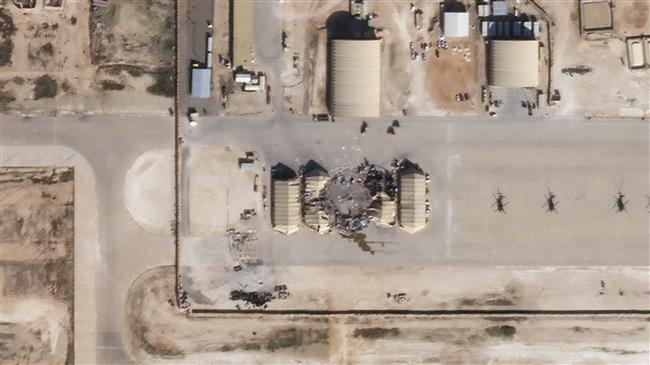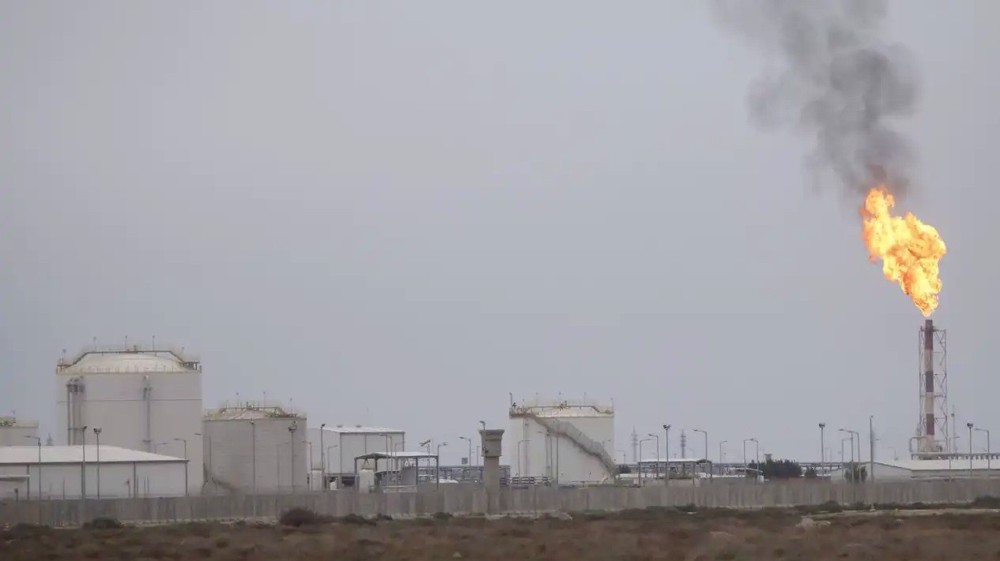Report: Damage from Iran strikes 'much greater' than US admits
A report by a correspondent for Danish TV 2 who has interviewed Danish soldiers positioned at Iraq’s Ain al-Assad airbase, which was the target of a retaliatory attack from Iran against US forces, shows that the damage done to the base has been “much greater” than the US officials acknowledge.
The report cites Danish sergeant John and other Danish soldiers as making the comment in an interview after the US military base in the western Iraqi province of Anbar was targeted by Iran’s retaliatory strikes.
“Suddenly, the first wave came, that’s what I call it. Nine rockets at barely a ton each. It cannot be described. I’ve never experienced anything like it, and I hope to never come to it again,” said the Danish sergeant, who was in a bunker along with his other comrades at the time of the strikes.
“The first strikes were so severe that we were sure we were going to a golden desert and nothing would be left. We were really surprised that everything hadn’t fallen on top of our heads. I would estimate that the nearest rocket hit 300 yards from us, and as we walked around afterwards, there were halves of helicopters, and there were holes so big that you could park a van in them,” the sergeant added.
Sergeant John went on to say that the damage was “actually much greater than the US admitted, with even helicopters being destroyed and not just several buildings damaged and hitting open territory in the camp.”
The Ain al-Assad airbase is a large complex located about 180 kilometers west of the Iraqi capital of Baghdad, housing about 1,500 US forces and members of the US-led coalition that purport to fight the Daesh Takfiri terrorist group.
On January 8, the Islamic Revolution Guards Corps (IRGC) fired volleys of ballistic missiles at Ain al-Assad, and another outpost in Erbil, the capital of the semi-autonomous Iraqi Kurdistan.
The missile operation was in response to the January 3 assassination by US terrorists of Lieutenant General Qassem Soleimani, commander of the IRGC’s Quds Force, and Abu Mahdi al-Muhandis, the second-in-command of Iraq’s Popular Mobilization Units (PMU), and a group of their companions in Baghdad. The cowardly operation was conducted under US President Donald Trump’s direction. The US Department of Defense took responsibility for the assassination.
Both commanders enjoyed deep reverence among Muslim nations over their endeavors in eliminating the US-sponsored Daesh Takfiri terrorist group in the region, particularly in Iraq and Syria.
Soon after the assassination, Leader of the Islamic Revolution Ayatollah Seyyed Ali Khamenei said Washington was to face a “harsh revenge.”
At the White House, Trump has denied the Iranian missiles left any casualties. Tehran said the US military conducted at least nine sorties after the operation, taking the wounded to Jordan and the Occupied Territories, while Chinook helicopters transferred the injured to a US hospital in Baghdad.
Iraqi lawmakers have unanimously approved a bill that calls for the withdrawal of all US-led foreign troops from the Arab country in the wake of the assassination.
Machado resurfaces in Norway for dubious Nobel after fleeing Venezuela
Tehran slams US 'harassment' of Iranian diplomats to UN
Ayatollah Khamenei: Iran advancing despite many challenges
Baby dies of cold as winter hits displaced Gazans amid Israeli attacks
Nuclear chief: Iran should turn from buyer to creator of technology
Swiss MPs urge revocation of UEFA tax-exemption over Israel ties
'No war on Venezuela' demonstration in US
Pezeshkian hails ‘decisive step’ in ties as Iran, Kazakhstan seal 14 deals











 This makes it easy to access the Press TV website
This makes it easy to access the Press TV website